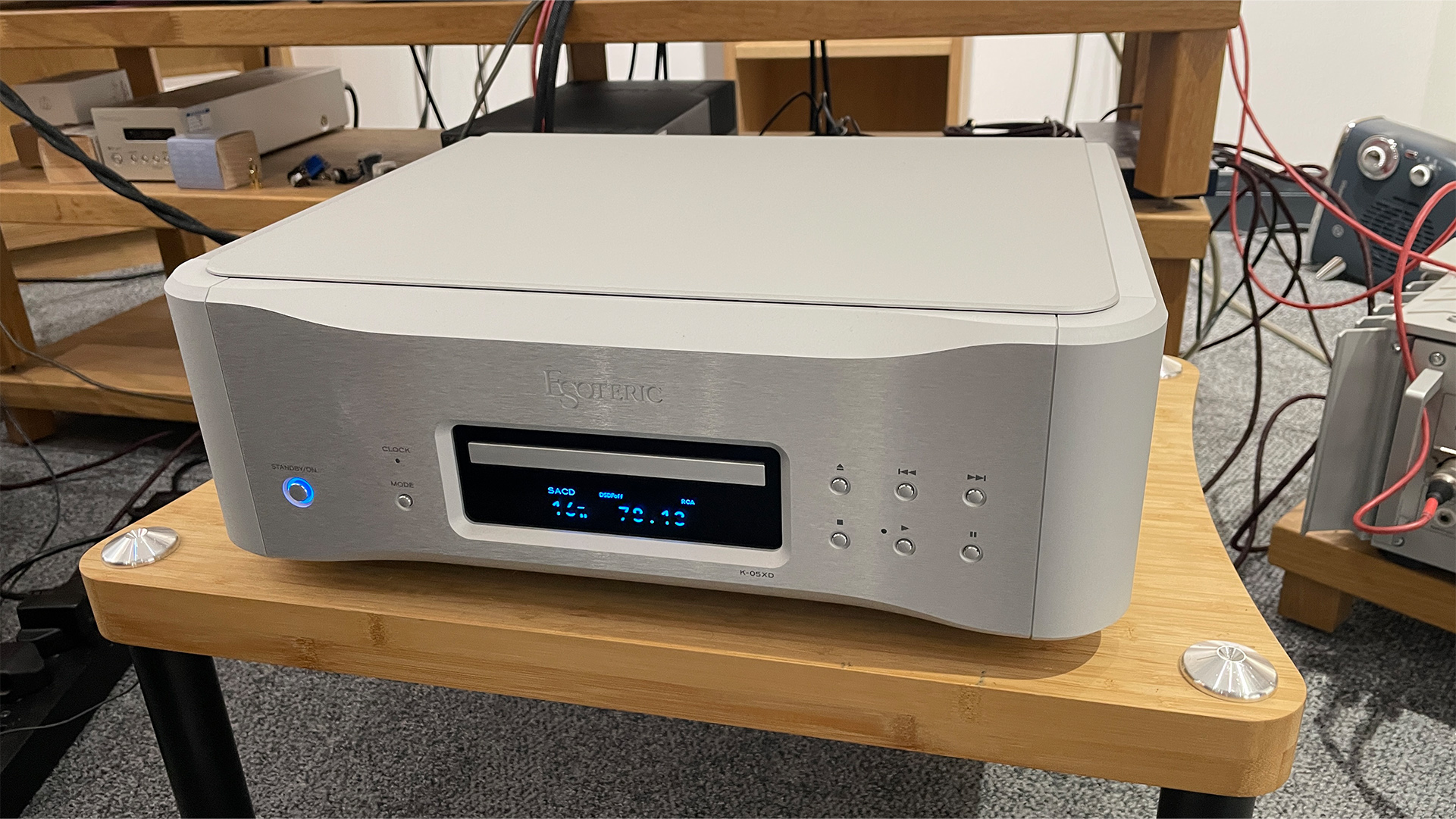What Hi-Fi? Verdict
Esoteric’s K-05XD is without doubt one of the world’s finest SACD/CD disc spinners
Pros
- +
Impressively pristine sonic presentation
- +
Exceptional clarity and detail resolution
- +
Confidence-inspiring build
Cons
- -
Price puts it beyond the means of most
Why you can trust What Hi-Fi?
This far into the age of hi-res music streaming, it would be easy to write off any new stereo disc player or CD player as anachronistic. In truth, that is a reasonable assessment given the paucity of new products and the fact that CD sales slid down the wrong end of the bell curve decades ago. What of SACD? Sadly, the pioneering high-res disc format, good as it is, never significantly impacted the mass market and is now arguably more niche than ever.
It is also possible to take a brighter view of things, and being the optimists we are, that’s what we like to do. There are billions of discs still in circulation and enough people that want to play them at the highest level for a brand like Esoteric to produce something as magnificent as the new K-05XD.
It will surprise many to find that this CD/SACD player merely represents the entry point into the company’s five-strong disc player range. The range-topper is an extravagant four-box affair with a separate transport, outboard power supply and mono DACs. The cost of this quartet? Over £100,000 / $100,000 / AU$120,000.
The Esoteric K-05XD we have on test here may be way more modestly priced, but by general standards, it should be considered a no-compromise solution for those who want to dig as much music as possible from their disc collection.
Build & design
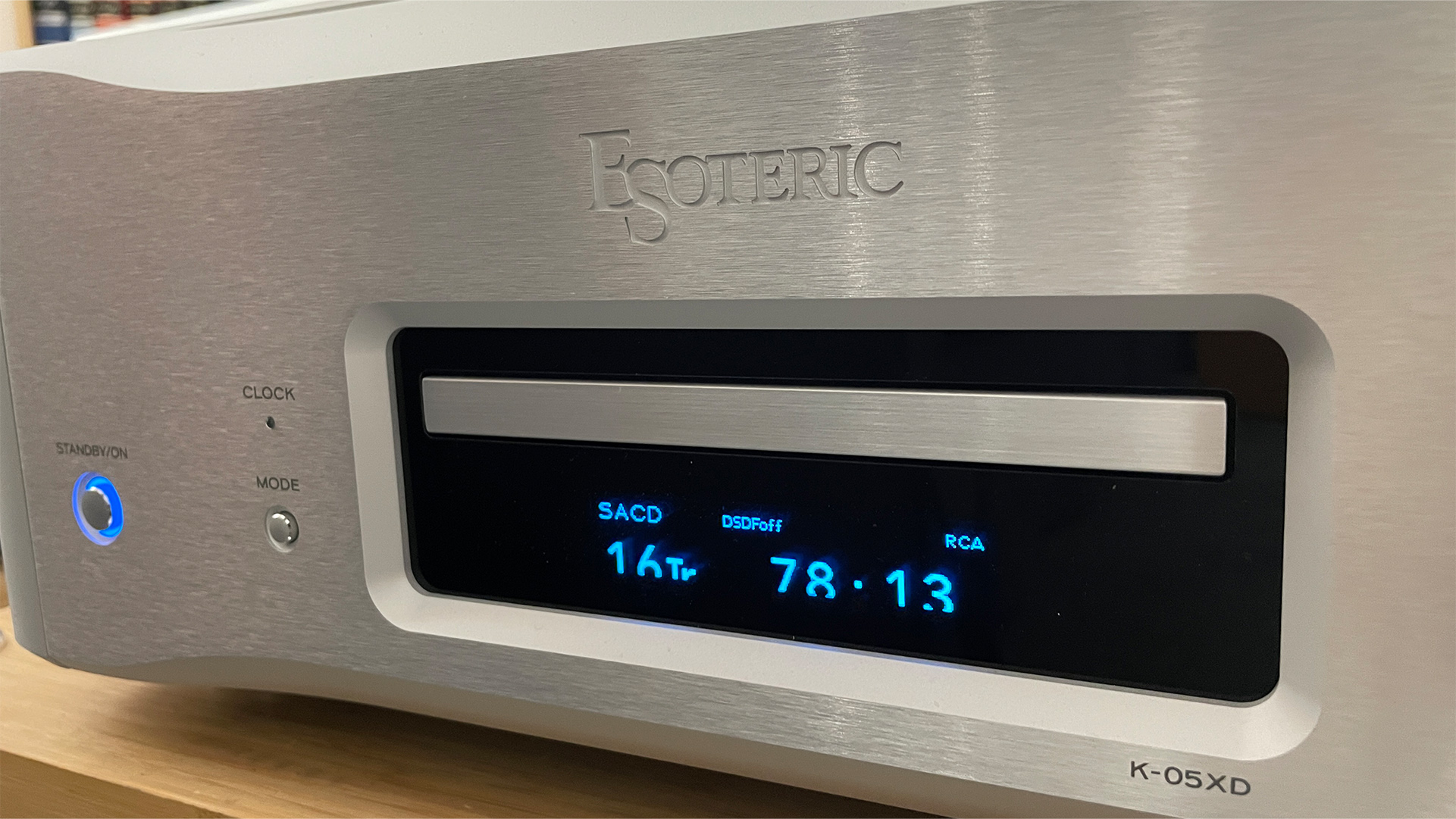
The heart of this player is the new VRDS Atlas transport mechanism. Esoteric, and by extension, its parent company TEAC, has long bucked the trend when it comes to disc transports. Rather than simply buy-in the mechanisms from OEM suppliers, as most other companies do, it has gone down the bespoke route with its proprietary VRDS transports; the initials stand for Vibration-free Rigid Disc clamping System.
This has always been more than mere marketing guff. In essence, it involves clamping the entire top surface of the disc in a bid to eliminate any resonances as well as flatten any slight warping, so that the laser and its servo mechanism have an easier time when reading the digital data. In theory, the result should be a better sound.
The version of the VRDS transport used here is called the Atlas 05, and is adapted from the Reference design used in the flagship transport. The aim remains the same and that’s to minimise and control vibration through clamping, damping and careful mechanical grounding.
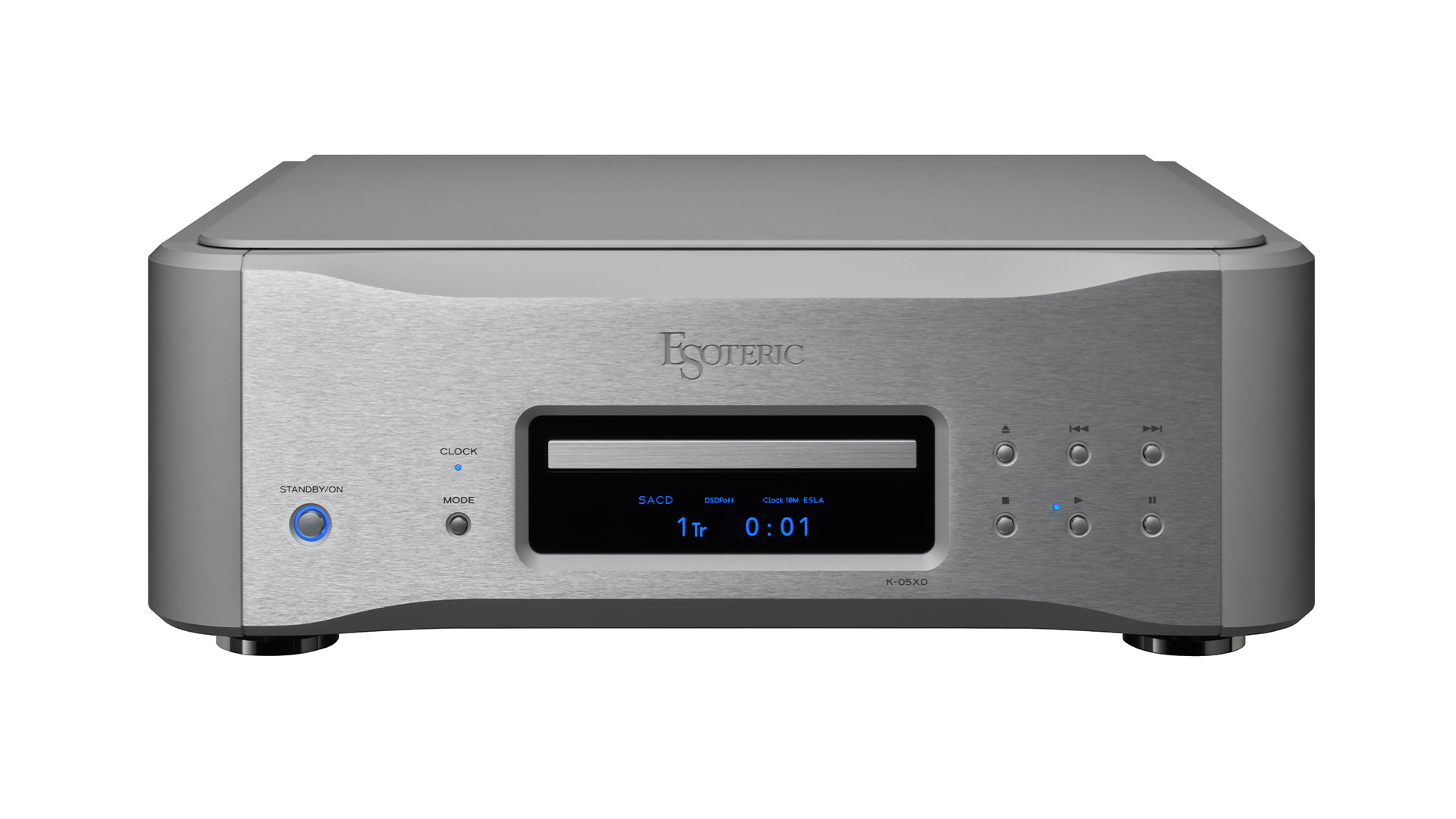
Type Integrated
SACD? Yes
Outputs Balanced XLR, RCA, BNC (coax), AES/EBU
Inputs Digital coaxial and optical, USB Type B
Dimensions (hwd) 16.1 x 44.5 x 35.7cm
Weight 20.7kg
Finishes x 2 (silver, black)
The K-05XD’s casework plays its part too. Its sandwich construction, thick and beautifully finished aluminium panels and deliberately floating top plate work together to give the VRDS mechanism a low resonance and solid base to work from.
The transport is centrally placed and is wider and lower than before to reduce its centre of gravity. It is rigidly attached to the 5mm thick steel base through its own 2mm thick steel base plate. Esoteric clearly believes in fully committed engineering. As with other models in the range, the bottom of the casework’s chassis is laser cut with slits to dissipate any mechanical vibrations generated by the transport mechanism. That floating top plate is a little disconcerting when we first unpack the K-05XD but is claimed to result in a more open sonic presentation when compared to the firmly bolted top panel of the previous generation of K-05.
The well-constructed chassis is split internally so that the sensitive audio circuits are generally on the top layer leaving the three power supplies (separately dealing with the analogue, digital and control circuitry) on the lower level to avoid unwanted electrical and magnetic interactions that degrade performance.
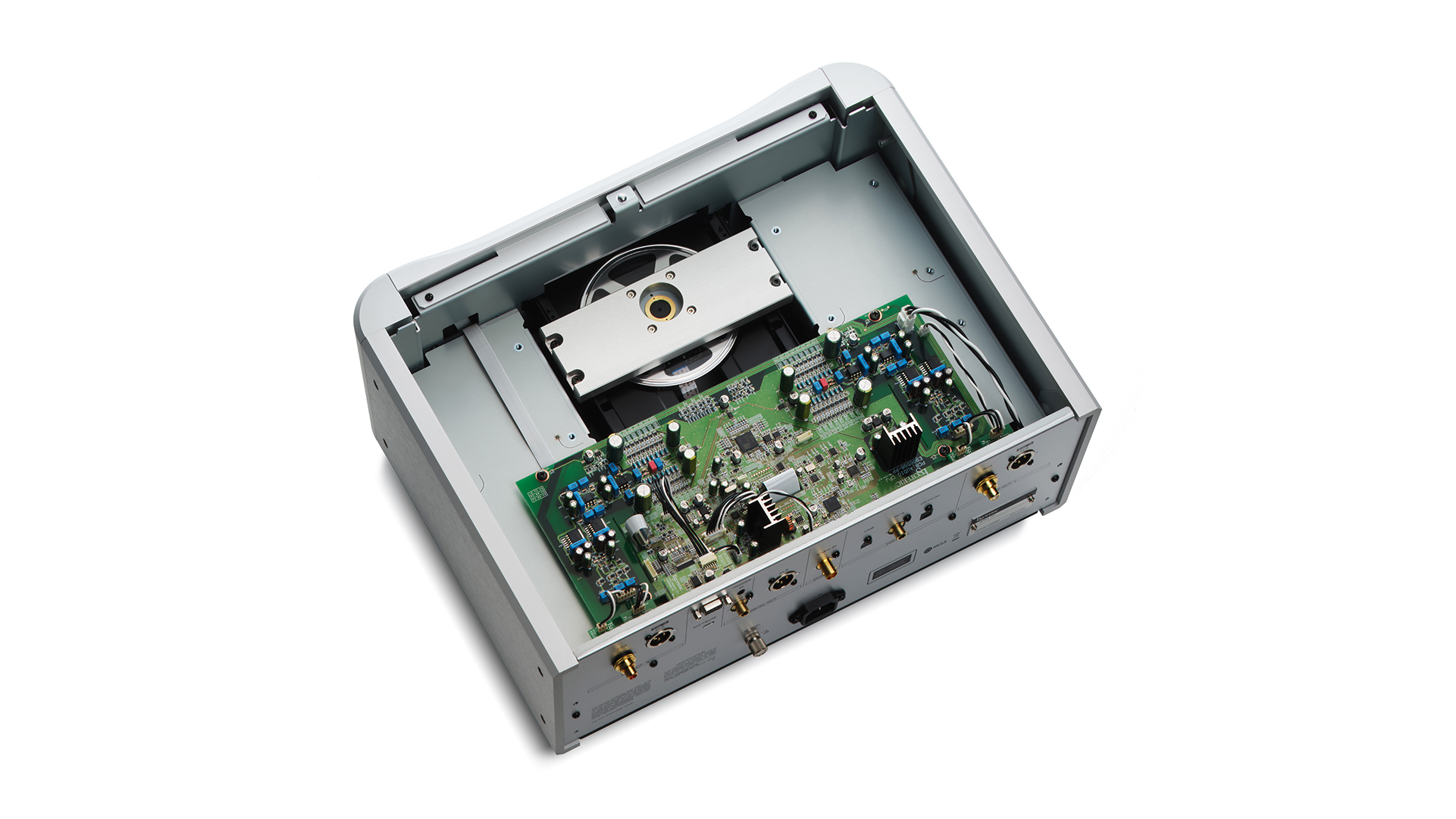
We’re pleased to report that K-05XD is lovely to use. It loads discs quickly and slickly, with little unwanted mechanical noise. The display is clear and large enough to read from a distance and the remote is a neatly-designed, double-sided metal unit that has the basic controls on one side and the less essential ones on the other. It is cleverly shaped so that it can be placed on either side without any of the buttons being pressed accidentally. In use, it is a responsive unit that is pleasantly weighted and easy to use.
The K-05XD is about as large as single-chassis disc players come and weighs in at almost 21kg, so you will need a suitably-sized and solid support. Esoteric’s engineers have taken a great deal of care over the player's feet design to minimise the transfer of mechanical energy between the unit and support. On the whole it doesn’t prove overly fussy about the material it is resting on. Just make sure the support is rigid, level and low resonance and you won’t go far wrong.
Features & connectivity
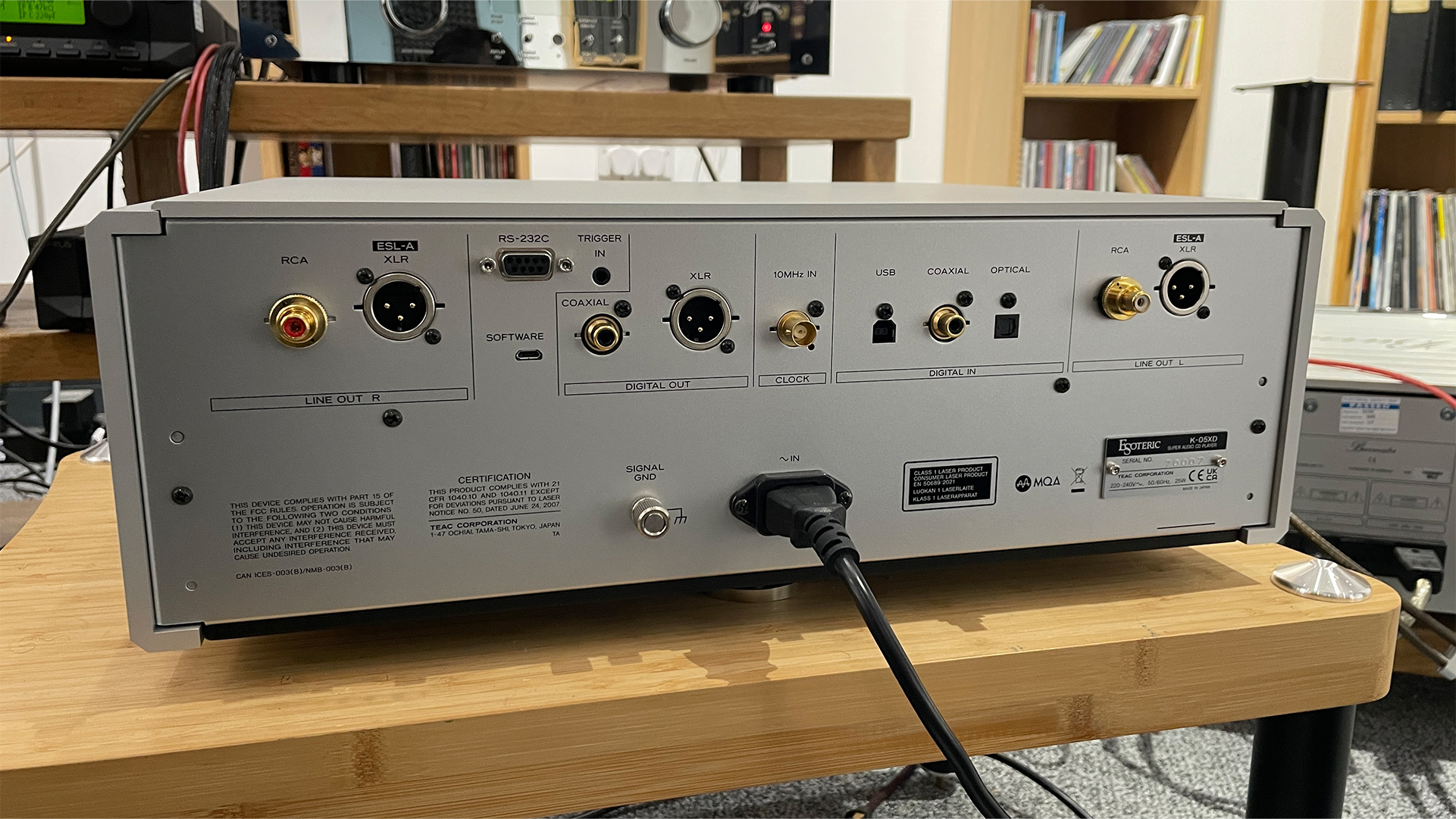
This player’s digital-to-analogue section is rather tasty too. Rather than use off-the-shelf DAC chips, as the previous generation of K-05 did and most of the competition still do, Esoteric has designed its own circuit that works with FPGA (Field Programmable Gate Array)-based algorithms to ensure compatibility with 32-bit/384kHz PCM hi-res files as well as DSD512 music streams. MQA is also on the menu. The performance of a digital circuit is massively dependent on the purity of the clocking signal, and here Esoteric has continued to push boundaries by designing a dedicated discrete clock module rather than use an IC-based design like most of the competition. If optimised, the result should be lower jitter and leading from that, improved sound.
General connectivity is as good as it gets for a physical disc player. There are coax and AES/EBU digital outs alongside the standard duo of single-ended and balanced XLR analogue outputs. There is a fair degree of flexibility here with it being possible to change the ‘hot’ pin in the balanced connections from Pin 2 to Pin 3 in the menus. The correct choice depends on how your preamp’s balanced input is wired. It is also possible to change the balanced XLR’s output to ES-Link, a proprietary signal that will only work with in-house preamps.
The K-05XD has digital inputs too (USB Type B, BNC coax and optical), so that external sources can also make use of that unusual in-house DAC section. Should the upgrade bug strike, there is the option to bypass that already sophisticated internal clock and use an outboard 10MHz unit instead. Having experienced the increase in performance a good quality outboard clock offers with other products, this is certainly an area we feel is worth investigating. Such things are never cheap though, with Esoteric introducing the partnering G-05 clock (£5500 / $5000 / AU$9000) late last year.
Sound
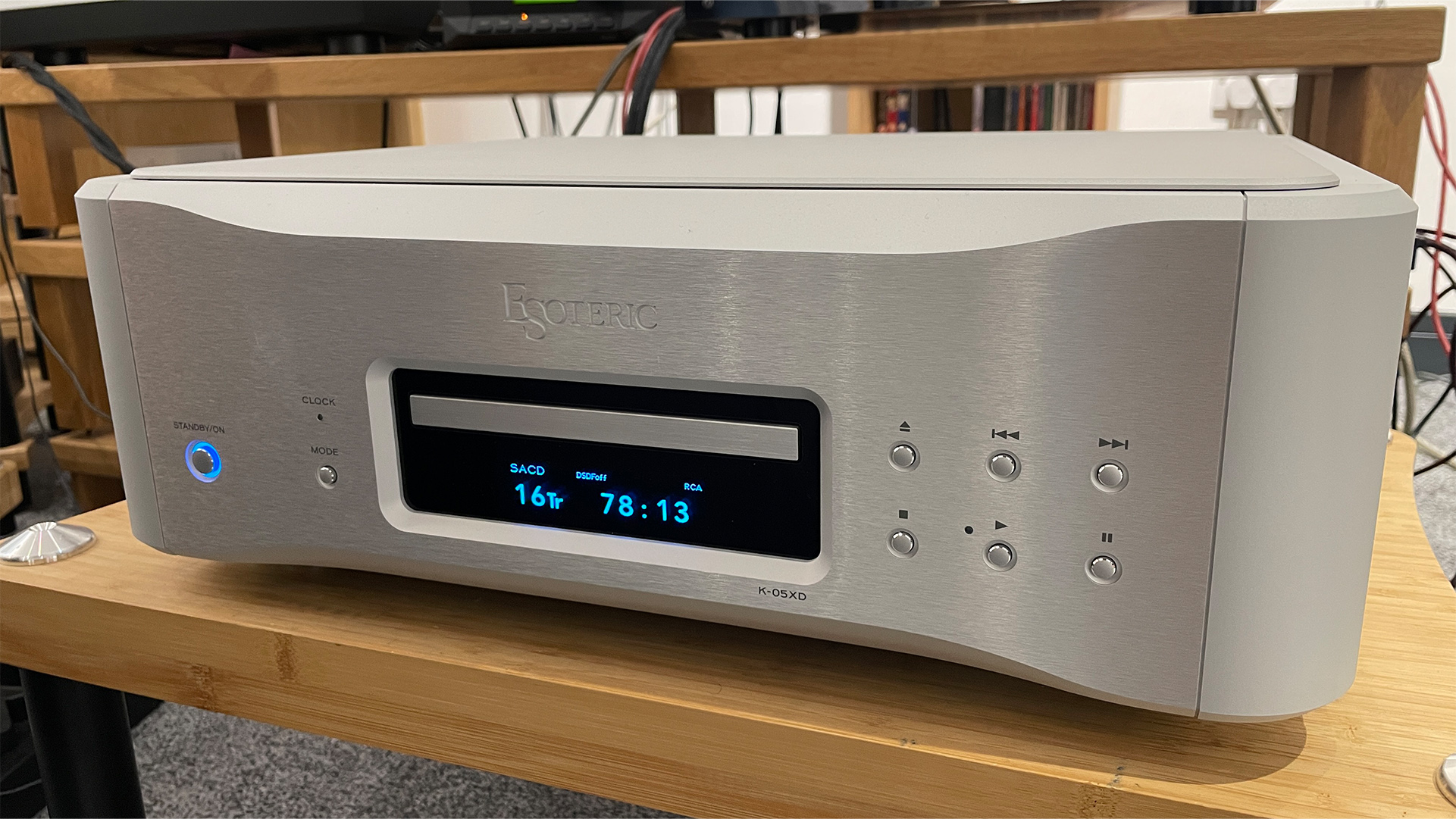
Any product at this level positively demands a top-class partnering system. During our test process, the K-05XD feeds our usual Burmester 088/911 MkIII amplifier and ATC SCM50 speakers. We also have Wilson Benesch’s A.C.T. 3Zero floorstanders on hand to give us a chance to see how the Esoteric performs in a slightly different flavour of system.
If you are someone that likes tweaking then the K-05XD gives you several options to fine-tune its performance. We prefer the sound with the digital output turned off and the DAC circuit's internal Delta Sigma operating frequency set at 256 (rather than at 128 or 512), simply because the sound seems a little cleaner and more fluid with these settings. We also like the RDOT PCM digital filter setting over the FIR alternative because it sounds a little more natural to us. The differences in all the settings are relatively small, but if the partnering system is transparent enough, they are easy enough to hear. Ultimately, the choice does come down to taste and partnering system, though.
We start with the original digital disc, CD, placing George Michael’s Ladies & Gentlemen Disc 1 on the Esoteric’s slim loading tray and enjoy the gentle mechanical whirr as it glides in and loads without fuss. These are simple pleasures that have been lost with the transition to music streamers. But, before we get too misty-eyed about the mechanics of loading a disc, let’s remember none of it matters if the K-05XD doesn’t perform well. Rest assured, it does.
This player has a wonderfully clean and organic presentation. There is no sense of harshness or over-emphasis of the leading edges of notes. We’re listening to Jesus To A Child and Michael's voice comes across with nuance and texture. While the presentation is as neutral as they come, it also avoids charges of sounding sterile by delivering the natural warmth and emotion in his performance well. The musical backdrop is beautifully defined, with no hint of confusion. Every instrument has its place, and is easy to follow, while still coming together as a convincing musical whole.
The next track, Father Figure, shows the Esoteric prefers the unvarnished truth over trying to make everything sound good. This track comes across as a little bright and thin (because that’s how it is), but also shows that the player has a firm grasp of rhythmic drive and the ability to communicate changes in musical momentum well. Lows are muscular but remain articulate with it. There is no hint of excess weight or richness here, which are both qualities that can be engineered in to make the presentation sound more palatable.
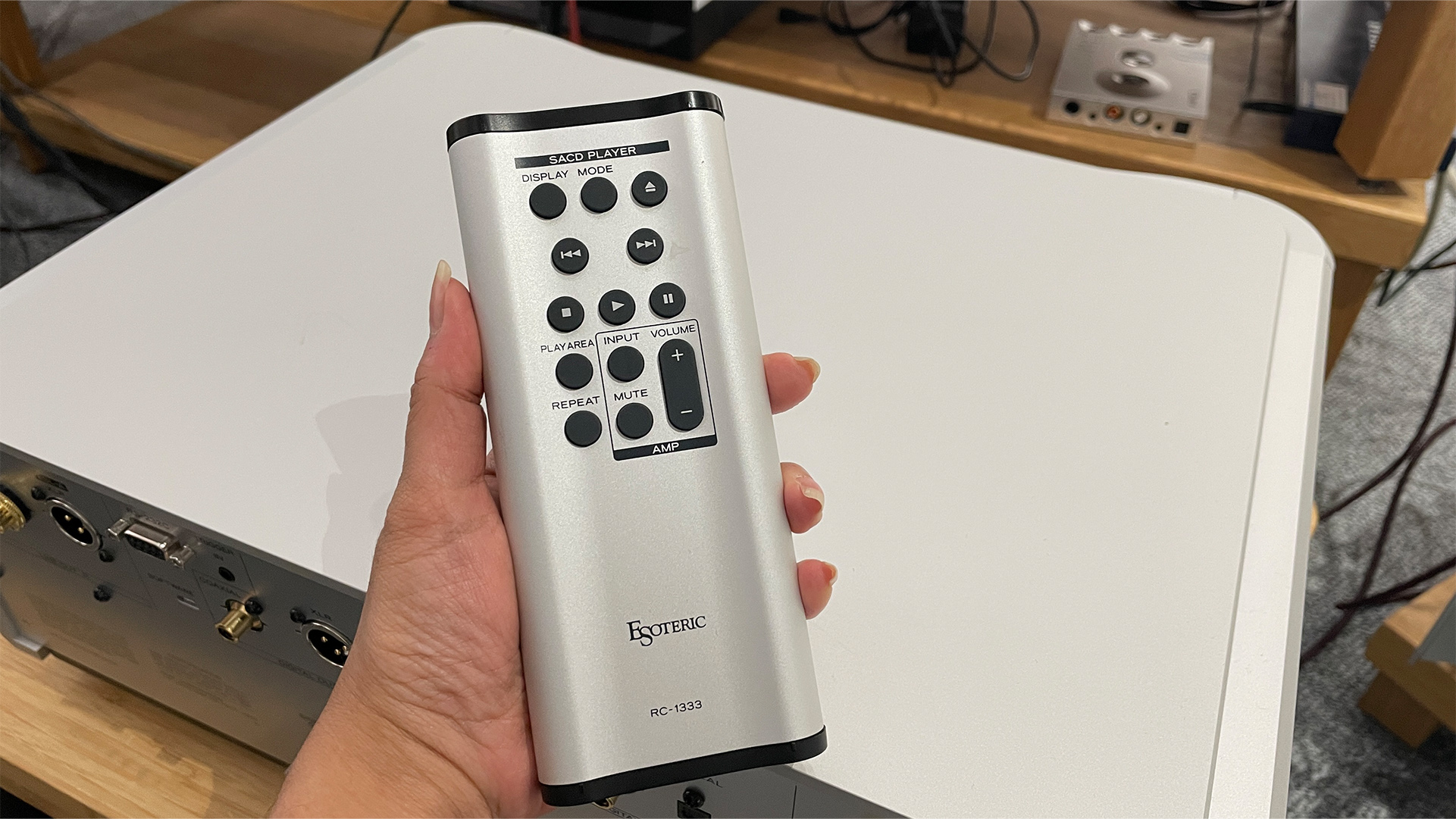
The honest approach is thrown into even sharper relief when we play an SACD of Stravinsky’s The Rite Of Spring. This is a lovely clean Decca recording with the music conducted by Valery Gergiev and played by the Kirov Orchestra. Here we’re impressed by the clarity on offer and the sheer amount of information the Esoteric reveals. Just as impressive is the way this player manages to arrange all that information to deliver a stirring musical experience. This symphony is known for its drama, complex instrumentation and wild dynamic swings, and the K-05XD delivers the full experience with enthusiasm.
This player has a large-scale and authoritative presentation and images with pleasing precision. Instruments are layered with care and locked into position even when the music becomes demanding. We love the spacious nature of the soundstage and the general lack of clutter. The Esoteric’s impressive ability to dig up low-level details shines through in the convincing way it places the orchestra within the recording venue. There is nothing showy here, no attempt to make the recording sound more impressive than it is. Just a pleasingly accurate rendition of the original recording.
Given the K-05XD’s excellence at playing discs it would be a shock if the internal DAC section didn’t shine. No need to worry, it does, whether through the USB input being fed from our Macbook (loaded with Audirvana music-playing software) or Chord’s 2go/2yu streamer feeding any of the Esoteric’s trio of digital inputs.
As we work our way through a DSD recording of Aimee Mann’s Lost In Space, The Dark Knight Rises OST (24-bit/192kHz PCM) and D’Angelo’s Black Messiah (24-bit/96kHz PCM) we are consistently impressed by the Esoteric’s subtlety and its ability to weave a multitude of instrumental strands into a cohesive and musically appealing sonic tapestry. It delivers a transparent and enjoyable sound that reflects the source quality with honesty. We can ask no more than that.
Verdict
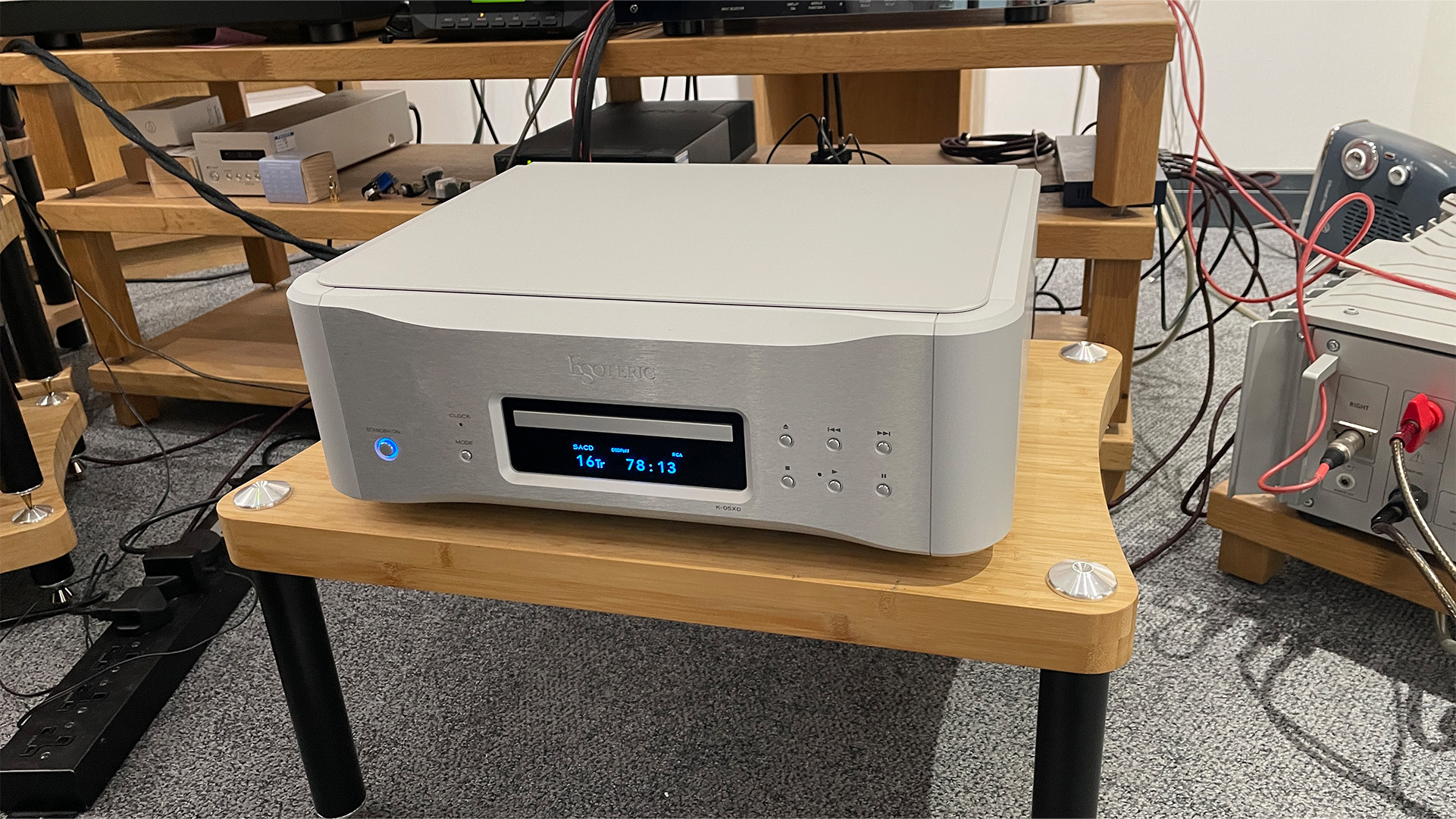
It should be clear by now that we think the Esoteric’s K-05XD is a superb performer. It is built beautifully and works with a slickness that most rivals simply can’t match. If you have a large collection of discs and want to hear the music recorded on them played back with integrity, we can’t think of a more desirable alternative at this level.
Review published: April 2024. Review updated: November 2024.
SCORES
- Sound 5
- Build 5
- Features 5
MORE:
Read our review of the Luxman D-10X
Also consider the Audio Research Reference CD9 SE
What Hi-Fi?, founded in 1976, is the world's leading independent guide to buying and owning hi-fi and home entertainment products. Our comprehensive tests help you buy the very best for your money, with our advice sections giving you step-by-step information on how to get even more from your music and movies. Everything is tested by our dedicated team of in-house reviewers in our custom-built test rooms in London, Reading and Bath. Our coveted five-star rating and Awards are recognised all over the world as the ultimate seal of approval, so you can buy with absolute confidence.
-
Friesiansam Reply
That's the kind of claim that, at least for me, makes me wonder, who exactly do they think they are kidding?What Hi-Fi? said:That floating top plate is a little disconcerting when we first unpack the K-05XD but is claimed to result in a more open sonic presentation when compared to the firmly bolted top panel of the previous generation of K-05. -
Gray Reply
The price makes me wonder that too 🤨Friesiansam said:That's the kind of claim that, at least for me, makes me wonder, who exactly do they think they are kidding?
